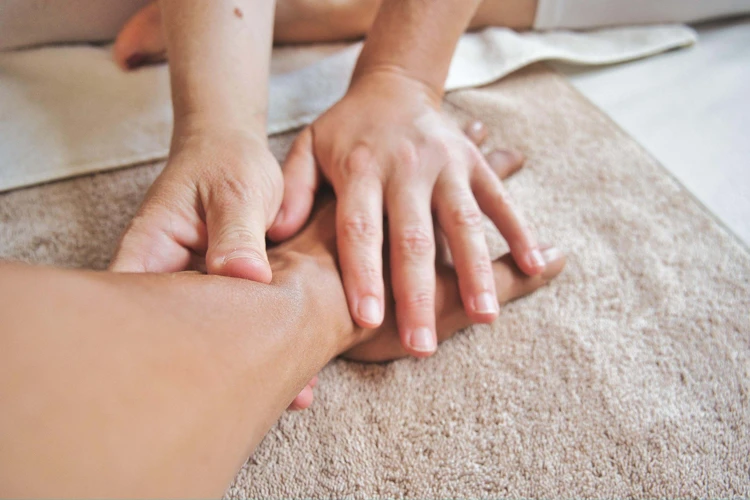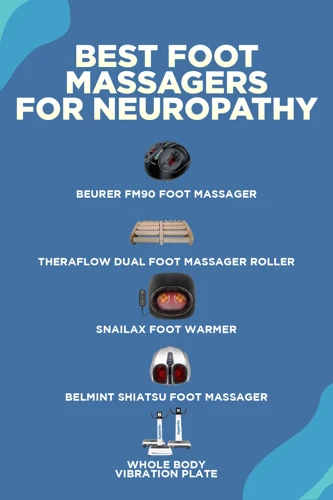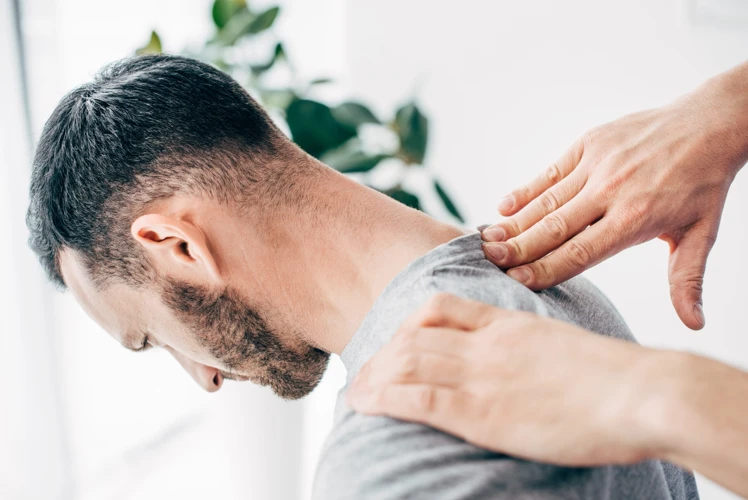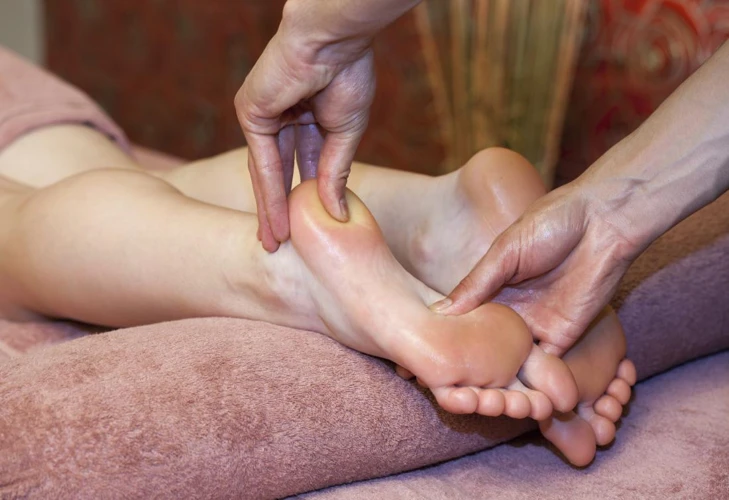Neuropathy, or damage to the peripheral nerves, is a common condition that can cause severe pain and discomfort. Fortunately, massage therapy can provide relief and reduce the symptoms of neuropathy. But with so many different types of massage therapy available, it can be difficult to determine what type of massage is best for neuropathy. In this article, we’ll explore the benefits of massage for neuropathy, and discuss which type of massage is best for this condition.
Contents
What is Neuropathy?

Neuropathy is a condition that affects the nerves of the body, causing pain, numbness and tingling. It is most often caused by damage to the peripheral nerves, which are located outside of the brain and spinal cord. The most common causes of neuropathy are diabetes, alcohol abuse, and certain medications. Other causes include traumatic injury, infections and autoimmune diseases.
Symptoms of Neuropathy
Neuropathy often affects the hands and feet, causing pain, numbness and tingling. Other symptoms can include weakness, burning sensations and loss of sensation.
Benefits of Massage for Neuropathy
Massage therapy is a great way to help relieve the symptoms of neuropathy. Massage can help reduce pain, increase circulation, and improve range of motion. It can also help reduce stress, improve sleep, and increase relaxation.
What Type of Massage is Best for Neuropathy?
The type of massage that is best for neuropathy depends on the individual. A massage therapist can assess the individual’s needs and tailor the massage to their specific needs. Generally, Swedish massage is the best for relieving pain and increasing circulation. Deep tissue massage is best for increasing range of motion and relieving tension. Trigger point therapy can be used to help with nerve pain and tingling.
How to Massage Feet with Neuropathy
When massaging the feet with neuropathy, it is important to be gentle and to not put too much pressure on the feet. Start with a light massage to the feet, using circular motions. This will help to increase circulation and relieve tension. Then use deep, slow strokes to massage the feet. This will help to relax the muscles and reduce pain. Finish with a gentle massage to the toes and feet. This will help to further reduce pain and improve range of motion.
What are the Benefits of Massage for Neuropathy?

Massage is a natural and effective way to alleviate the pain and discomfort associated with neuropathy. Massage is known to increase circulation, reduce inflammation, reduce stress and anxiety, and provide relief from muscle tension and pain.
- Massage promotes better circulation of blood, reducing inflammation and pain caused by neuropathy.
- Massage helps to reduce stress and anxiety, allowing the body to relax and feel more comfortable.
- Massage helps to relax the muscles and reduce tension, allowing the muscles to move and heal more easily.
- Massage stimulates the release of endorphins, the body’s natural painkillers.
- Massage can help to improve the range of motion of joints, allowing for better movement.
What Type of Massage is Best for Neuropathy?
The type of massage that is best for neuropathy depends on the individual and the location of the pain. Generally, a light to moderate massage is recommended to reduce the pain and discomfort associated with neuropathy. Deep tissue massage, Swedish massage, and reflexology are all techniques that may be used to help relieve the pain and discomfort of neuropathy.
How to Massage Feet for Neuropathy?
Massaging feet can help to reduce the pain and discomfort associated with neuropathy. It is best to start with a light massage and then progress to a deeper massage. Start by using your thumb and knuckles to massage the arch of the foot. Then work your way up to the toes, using circular motions. Be sure to apply gentle pressure and avoid any areas that are too painful. Finally, end the massage with a light stretching to help relax the muscles and reduce tension.
What Types of Massage are Best for Neuropathy?

Swedish Massage
Swedish massage is a gentle type of massage that can be used to reduce muscle tension and improve circulation. This type of massage can help to reduce pain and discomfort associated with neuropathy, as well as improve muscle tone.
Deep Tissue Massage
Deep tissue massage is a more intense form of massage that is used to target specific areas of tightness, tension, and tenderness. This type of massage may help to provide relief from chronic pain, as well as reduce inflammation.
Reflexology
Reflexology is a massage technique that targets the reflex points on the feet that correspond to specific areas of the body. This type of massage can help to reduce pain and discomfort associated with neuropathy, as well as improve circulation in the feet.
Shiatsu
Shiatsu is a traditional Japanese massage technique that uses pressure points and stretching to reduce tension and increase circulation. This type of massage can help to reduce pain and discomfort associated with neuropathy, as well as improve overall wellbeing.
Acupressure
Acupressure is a massage technique that uses pressure points along the body’s energy pathways to reduce pain and improve circulation. This type of massage can help to reduce pain and discomfort associated with neuropathy, as well as improve circulation in the feet. It is also a great way to massage numb feet.
How to Massage Feet with Neuropathy?

Preparing for the Massage
Before you begin your massage, it is important to make sure the area is clean and free of any debris. Use a soft cloth and warm water to wipe down the feet, being careful to avoid any open wounds. After cleaning the feet, apply a thin layer of lotion or oil to the feet, as this will help keep the skin lubricated during the massage.
Lubricating the Feet
It is important to keep the feet lubricated during the massage, as this will help the massage therapist to easily glide over the skin without causing any irritation or friction. It is best to use a lotion or oil that is specifically designed for massage, as it will have the right combination of ingredients to keep the skin hydrated and protected.
Utilizing Pressure Points
Pressure points are areas of the body that are sensitive and can be used to provide relief from pain and tension. During a massage for neuropathy, the therapist will use their hands to apply pressure to specific pressure points on the feet. This pressure can help to relieve tension and reduce pain.
Gentle Massage Movements
The massage movements used for neuropathy should be gentle and slow, as this will help to reduce the amount of irritation and discomfort caused by the massage. The therapist may use various massage techniques, such as kneading, tapping, and rolling.
Pressure and Pacing
The massage therapist should be aware of the level of pressure they are applying to the feet. Too much pressure can cause further irritation and pain, while too little pressure may not provide any relief. The therapist should also be aware of the pacing of the massage, as this will help to ensure that the massage is not too fast or too slow.
Alternating Hot and Cold Compresses
In addition to massage, the therapist may also use alternating hot and cold compresses to help reduce inflammation and pain. Hot compresses can help to relax the muscles, while cold compresses can help to reduce swelling and reduce pain. The therapist should be careful to not leave the compresses on for too long, and should adjust the temperature as needed to ensure that the patient is comfortable.
How to Massage Numb Feet?
Preparing for the Massage
Before beginning the massage, make sure the area is warm and comfortable. If you are massaging your own feet, use a pillow or blanket to support your feet. If you are having someone else massage your feet, make sure they have the right tools, such as a foot massager, lotion, or essential oils.
Utilizing Pressure Points
Pressure points are specific spots on the feet that can help relieve pain. Using a gentle circular motion, massage the pressure points on the feet to stimulate circulation and loosen up the muscles. Be careful not to press too hard to avoid pain or discomfort.
Gentle Massage Movements
Start by massaging the tops and sides of the feet with a gentle circular motion. Move your hands up and down the length of the feet, focusing on any areas that feel especially tight or sore. Avoid using too much pressure or vigorous movements, as these can cause further irritation.
Pressure and Pacing
When massaging numb feet, it is important to find the right balance between pressure and pacing. Start with light pressure and gradually increase the pressure as your feet become accustomed to the massage. Be sure to take breaks in between and listen to your body. If you feel any pain or discomfort, stop the massage and consult with a doctor.
Alternating Hot and Cold Compresses
Alternating hot and cold compresses can help reduce inflammation and enhance the massage. Start by applying a hot compress for a few minutes, followed by a cold compress for the same amount of time. Repeat this process several times to help reduce swelling and improve circulation.
Frequently Asked Questions
What are the Symptoms of Neuropathy?
- Pain: Pain may be described as burning, stabbing, tingling, or numbness.
- Loss of sensation: Numbness in the affected area may be experienced.
- Loss of reflexes: Loss of reflexes may be experienced.
- Weakness: Weakness may be experienced in the affected area.
- Loss of balance: Loss of balance may be experienced due to impaired sensory input.
- Organ dysfunction: Problems with digestion, urination, and sexual function may be experienced.
How Long Does a Massage Treatment Typically Last?
A massage treatment typically lasts between 30 minutes to an hour. Depending on the type of massage, the therapist may focus on specific areas or use a combination of different techniques. Massage therapists may also offer extended sessions of up to 90 minutes or longer, depending on the individual’s needs.
Are there any risks associated with massage therapy for neuropathy?
Yes, there are some risks associated with massage therapy for neuropathy:
- Massage therapy may cause bruising at the site of treatment.
- Massage therapy may increase swelling in the affected area.
- Massage therapy may cause nerve damage in extreme cases.
- Massage therapy may cause an allergic reaction in some people.
- Massage therapy may cause pain or discomfort in some people.
- Massage therapy may cause infection in some cases.
It is important to always consult a qualified massage therapist before getting a massage for neuropathy and to always follow their instructions to ensure the safest and most effective treatment.
Does Massage Therapy for Neuropathy Require a Doctor’s Prescription?
- In most cases, a doctor’s prescription is not needed for massage therapy for neuropathy. While there are some cases where a doctor’s prescription is necessary, such as if the patient has a history of certain medical conditions, this is not always the case.
- Massage therapists are licensed professionals and are qualified to provide massage therapy for neuropathy without a doctor’s prescription. A massage therapist may use their professional judgement to determine the best course of massage therapy for the patient.
- In some cases, a doctor may recommend massage therapy for a patient with neuropathy. This is especially true if the patient has a history of medical conditions that may benefit from massage, such as chronic pain, muscle spasms, or nerve damage.
- It is always best to consult with a doctor before beginning any massage therapy. A doctor can provide guidance on the best massage therapy for the patient’s individual needs, as well as any potential risks or contraindications.
Is Massage Therapy a Good Treatment Option for All Types of Neuropathy?
Massage therapy has been found to be effective in relieving pain and improving symptoms of certain types of neuropathy. However, it is not suitable for all types of neuropathy and should be used in conjunction with other treatments. Below are some of the benefits of massage therapy for neuropathy:
Relieves Pain and Discomfort
- Reduces inflammation
- Relaxes muscles and tendons
- Improves circulation
- Improves range of motion
- Reduces stress and anxiety
Improves Mobility
- Increases flexibility
- Improves balance and coordination
- Reduces spasms
- Reduces risk of injury
Improves Quality of Life
- Improves sleep quality
- Increases energy levels
- Reduces fatigue
- Improves mental clarity
- Improves mood and self-esteem
Massage therapy is not suitable for all types of neuropathy. It is important to consult with a physician before starting any massage therapy program. Massage should be used in conjunction with other treatments such as physical therapy, medications and lifestyle changes.
Conclusion
Massage therapy can be an effective treatment for neuropathy. Massage can reduce pain, improve mobility, and increase blood flow to the affected area. Different types of massage may be beneficial, such as Swedish massage, sports massage, and trigger point massage. It is important to speak with a massage therapist to determine the best type of massage for your individual needs.

